
Compression socks, including support knee-high socks, are an effective solution for the treatment of swollen feet, edema, and other leg conditions.

They can also help relieve tired, heavy legs after a long day at work.
Physicians frequently prescribe compression socks for pregnant mothers, people who are recovering from surgery, and those with chronic venous insufficiency.
Compression therapy improves the circulation in legs and prevents blood pooling. Patients like the pain relief and the overall convenience of compression socks. There are even compression socks for desk job sitting all day.
Compression socks are also popular among athletes who claim they help with performance and recovery.
Research published in the Journal of Strength and Conditioning found that compression gear helped those with exercise-induced muscle damage from strenuous activities.
What Are Support Knee-High Socks?

Compression gear includes compression socks, sleeves, and wraps that are applied to the legs and feet. These garments apply continuous pressure. You may also hear them referred to as “support hose.”
The simple application of pressure has amazing benefits in reducing swelling and edema symptoms. Most compression gear is tightest at the ankle and looser further up the leg.
This graduated compression squeezes the blood vessels, which helps the blood move upwards and back to the heart. The heart, in turn, adds more oxygen to the blood, which is delivered back to the muscles.
Compression socks also help prevent secondary inflammation and swelling associated with physical inactivity or prolonged exhaustive activity.
Support knee-high socks are the most popular type of men’s compression gear. Thigh-high socks are more popular for women.
Types of Compression Gear
The use of compression stockings in the US and Europe has been increasing dramatically over the past few years. More and more people have used them to find relief from edema, swelling of legs, and chronic medical leg disorders.
There are so many varieties, designs, and models of compression socks that choosing a pair can seem complicated and confusing. We have covered all of the categories of compression gear in detail to help make this decision easier.
Length
Compression socks range from ankle-high to hip-high. The correct height for you depends on your personal preference and specific medical conditions.
- Ankle Socks
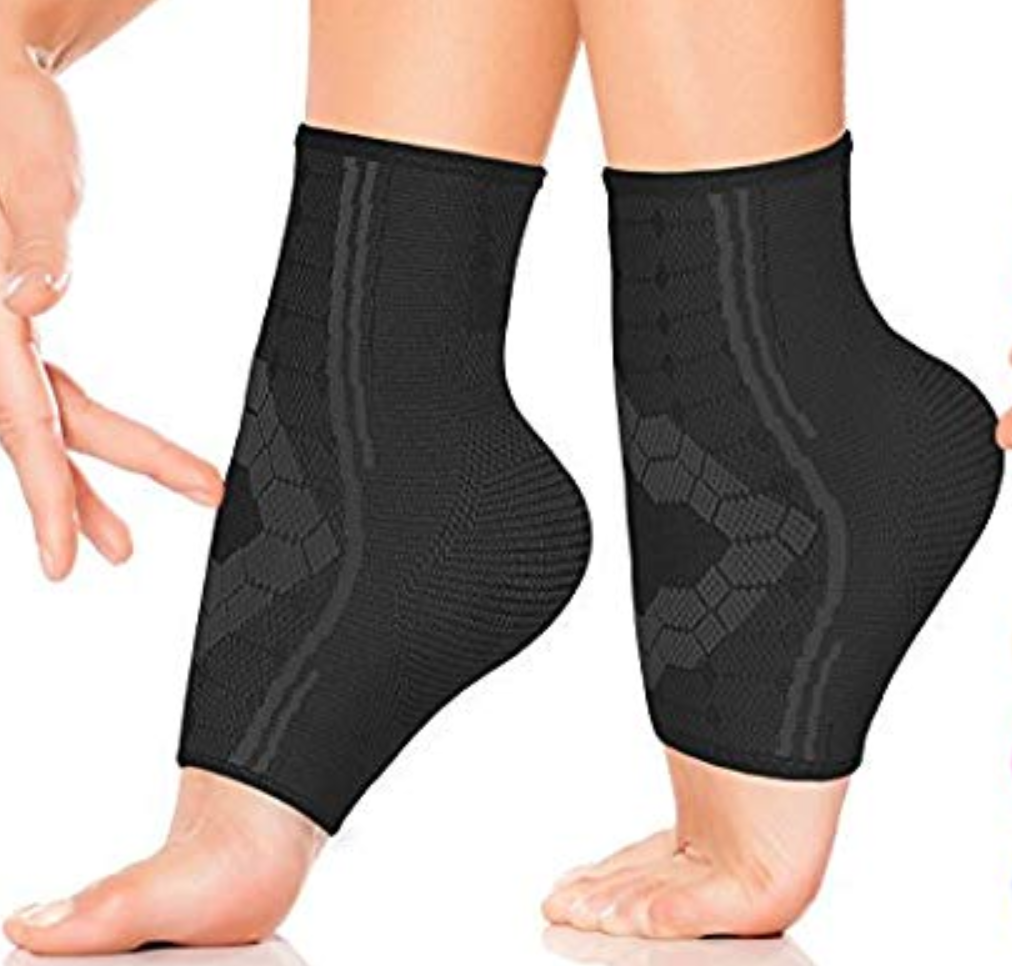
Ankle socks cover the foot and rise to just below the ankle. They can be easily hidden inside a shoe, and many people like wearing them with dresses and skirts.
- Over-the-Calf Socks
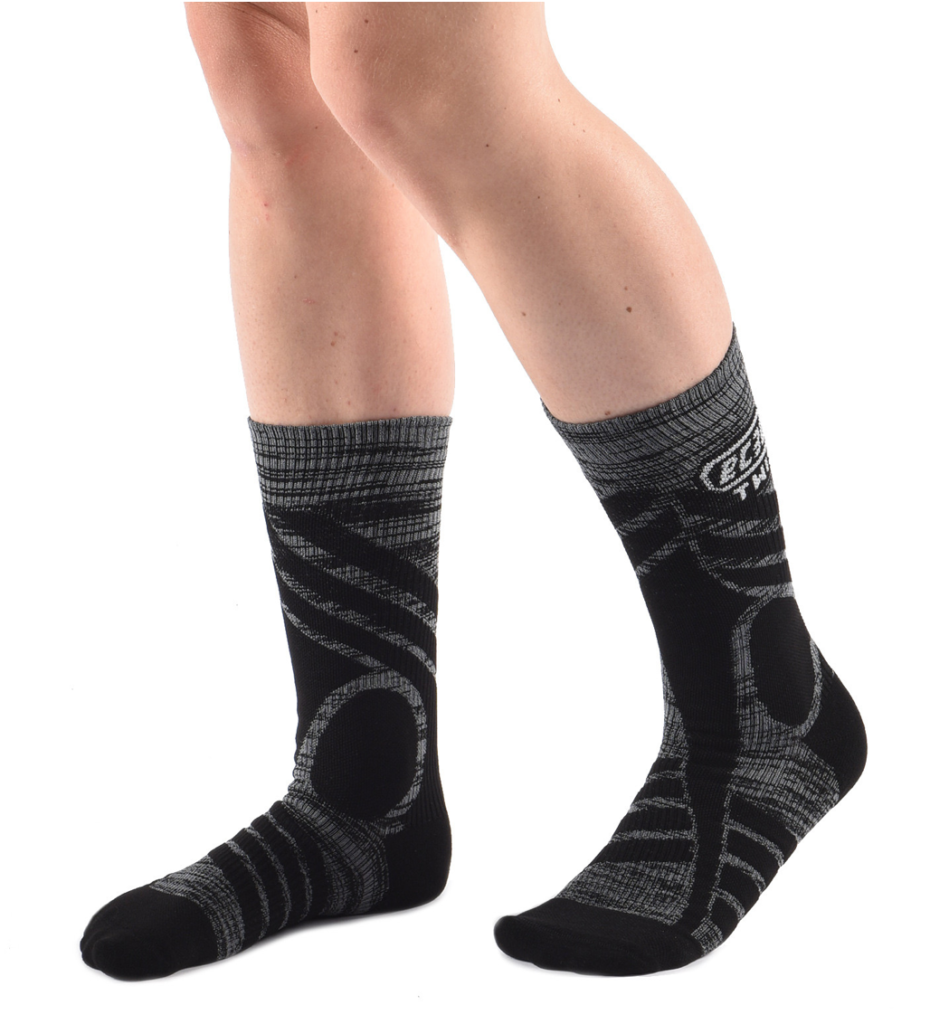
Over-the-calf socks are also known as crew socks. They extend to the middle of the calf.
- Knee-High
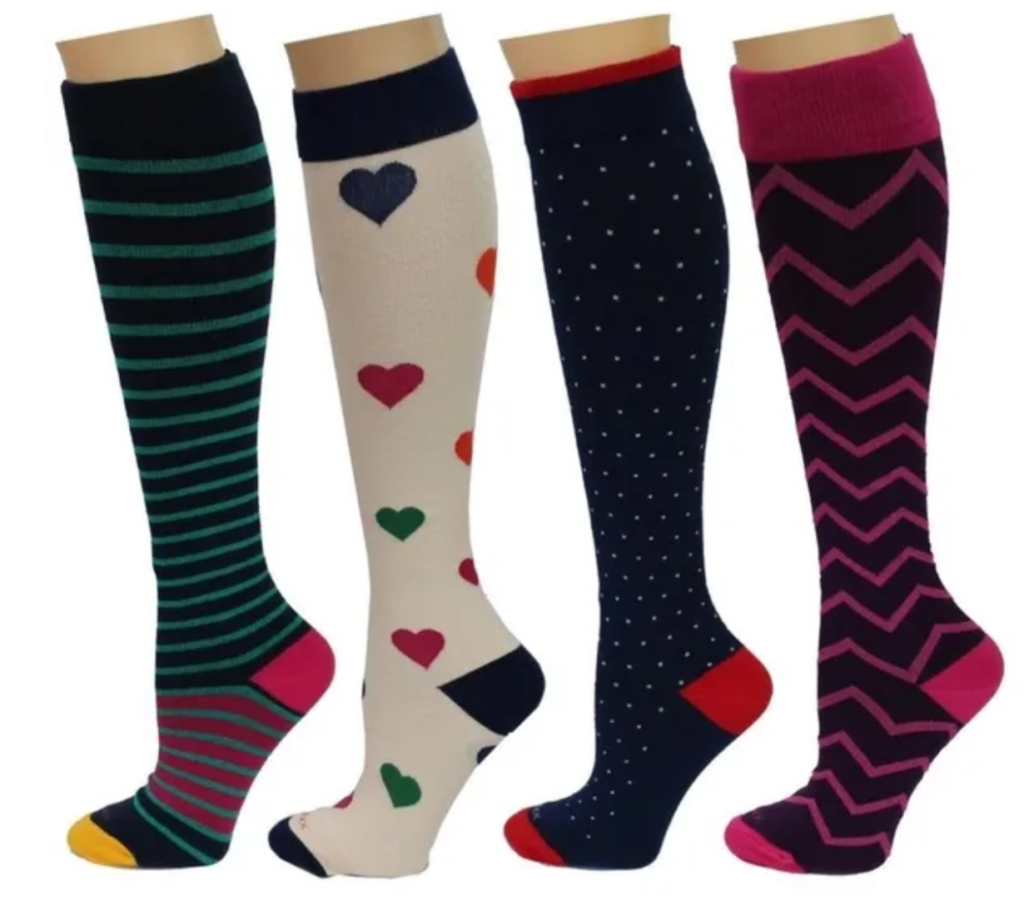
Knee-highs are the most popular category of men’s compression stockings in the US. They extend from the toe to just below the knee. Support knee-high socks are known for being versatile.
Over-the-Knee Stockings
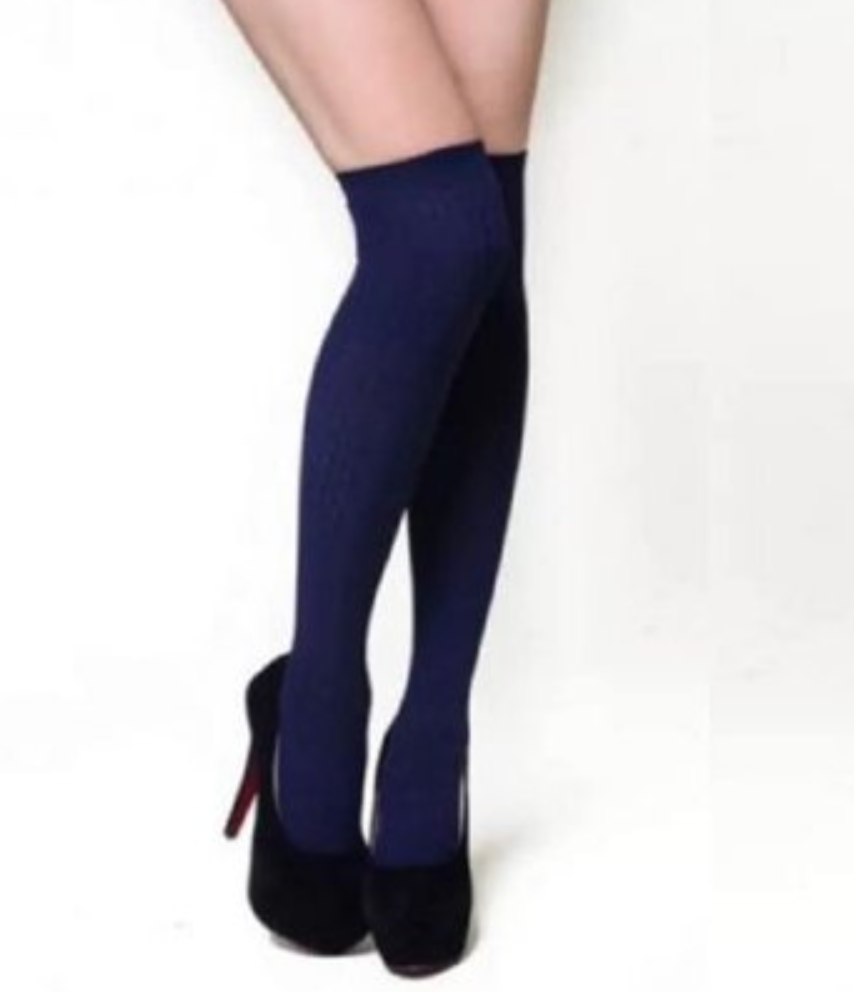
People often confuse knee-high stockings with ‘over-the-knee’ socks. Over-the-knee stockings are different because they rise to just above the knee. If you are looking for some extra protection, then over-the-knee stockings are probably the right choice for you.
- Thigh-High stockings
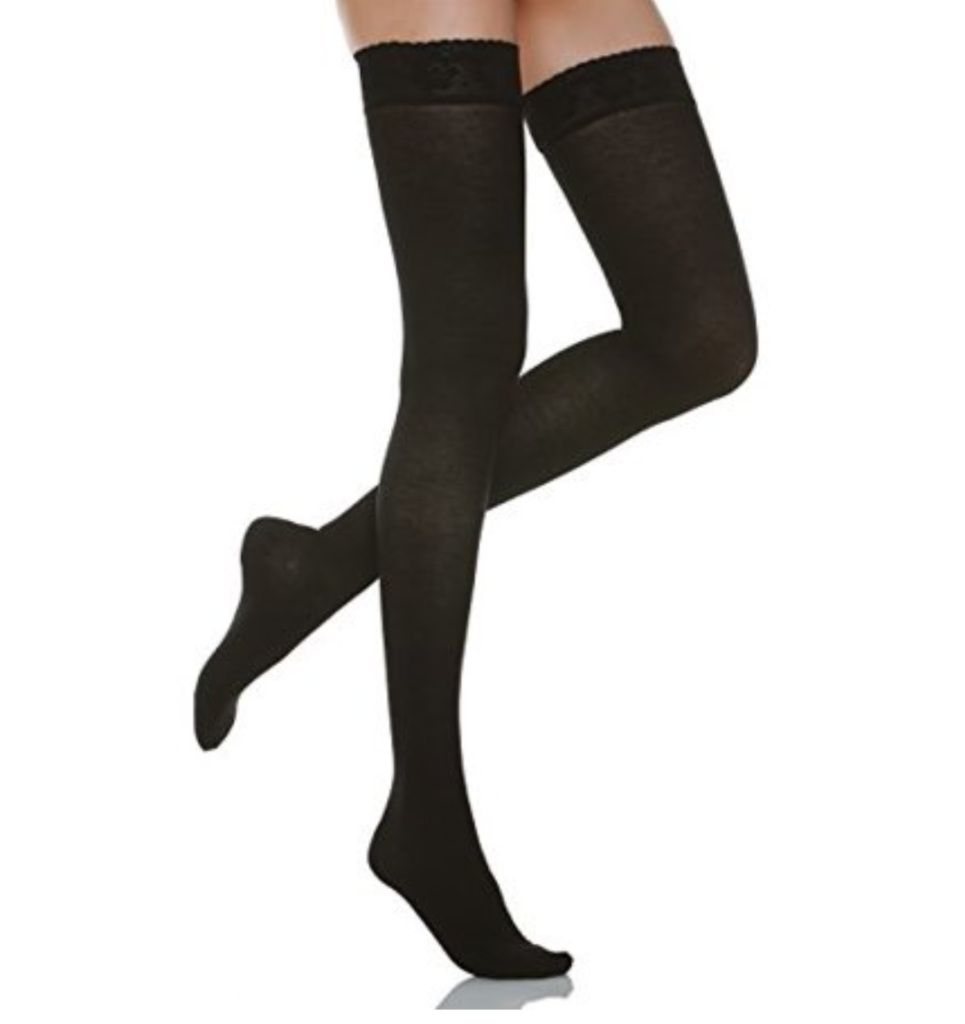
Socks that extend to the mid-thigh are known as thigh-high stockings. They are the most popular compression gear for women in the US because they are useful for treating a variety of conditions. These socks usually rise a few inches higher than over-the-knee socks.
- Pantyhose or Waist-High
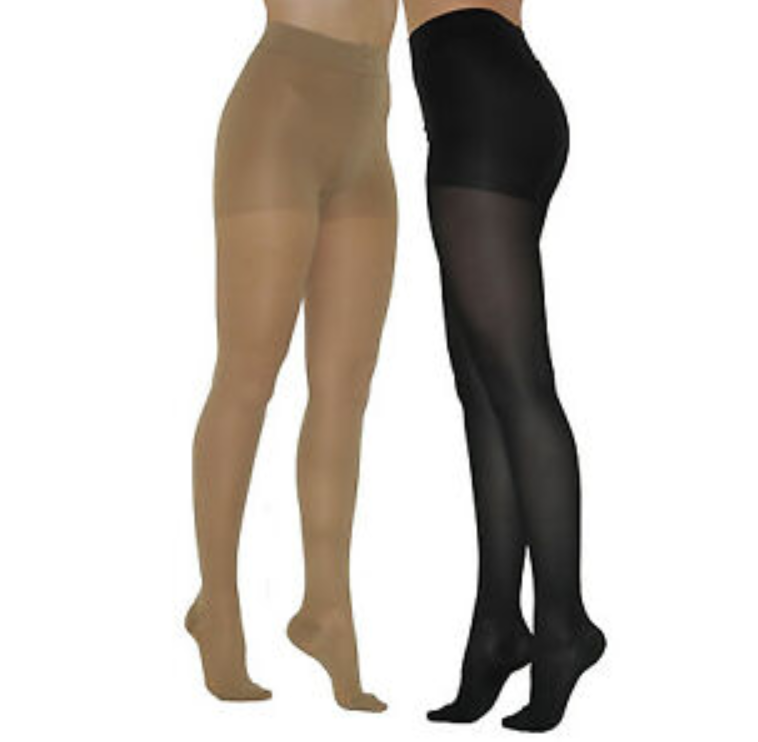
Finally, the tallest socks are full-length pantyhose. These are sometimes referred to as waist-high stockings. Naturally, they cover everything from the toe right up to the waist. These socks can be worn under clothes, and some women like that they also have body shaping properties.
Compression Level
The pressure exerted by compression gear is not random. It actually is precisely calculated. Typically, you will see compression levels measure in millimeters of mercury (mmHg), and you will want to pick a level to help with your specific medical conditions. The standard compression ranges available in the US are:
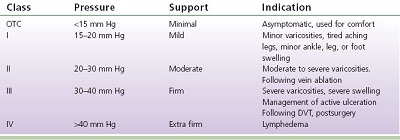
- Class 1: This is the lightest compression, and it includes socks with pressures ranging from 12 mmHg to 20 mmHg. This level is perfect for those who have minor swelling and do not experience any severe symptoms.
- Class 2: This is the medium compression range that includes socks with pressures ranging from 20 mmHg to 30 mmHg. This is the most commonly used compression level. It is ideal for treating DVT (Deep Vein Thrombosis), dependent edema, diabetes, varicose veins, and swollen feet. Moderate compression socks are also useful for lymphedema, chronic venous disorders, and thrombophlebitis.
- Class 3: This compression range includes socks with pressures of 30 mm Hg to 40 mmHg. They are used to prevent and cure lymphedema and elephantiasis.
- Class 4: Socks with more than 40 mmHg of pressure are considered class 4. Physicians rarely prescribe these socks to patients, but they can be useful for those who are recovering from severe ulcers and lymphedema. You must not use these ultra-high compression socks without a prescription from your doctor.
Please note that seamless compression socks have slightly different classes.
Size

A manufacturer’s size chart can help you find your correct compression sock size based on your shoe size.
Some vendors also offer a measurement guide with simple instructions that can help you determine which size of stocking you need.
Plus-size stockings are also available. They will have extra room in the calf and thigh. Some manufacturers have socks with wide-toe options too.
Shape

All lengths of compression socks are available in closed-toe, toeless, and sleeve shapes.
Toeless socks leave the toe of the feet open and give you some extra wiggle room. They are particularly suitable for people who sweat more and those with foot conditions.
Compression sleeves leave your entire foot exposed and only apply pressure above the ankle.
Material

Compression socks are usually made from a blend of materials to make them sturdy and elastic.
They typically contain lycra, elastane, nylon, wool, cotton, spandex, and polyamide materials.
Some manufacturers have also introduced sustainable materials like organic fibers into their socks.
The characteristics of the sock are affected by the materials used.
For instance, nylon and elastane will make a sock breathable, while cotton or wool may make a sock warmer.
You should also look for socks that have reinforced toes and heels, which will increase the longevity of the garments.
Support Knee-High Socks for Ladies and Gents
Although some manufacturers offer separate models for men and women, most compression socks are unisex by design.
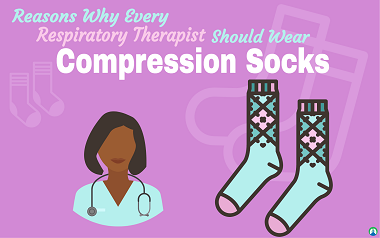
Men’s socks usually are usually opaque with earthy colors. They will also have a slightly bigger size range than women’s socks. Ladies’ socks have a variety of designs and patterns with matte colors, laces, and embroidery options.
Support Knee-High Socks or Thigh-High Socks?

Both support knee-high and support thigh-high socks are effective as compression gear. Experts generally do not recommend one above the other.
Each style, however, does come with certain advantages and disadvantages.
For instance, knee-high socks are generally more comfortable and easier to remove than thigh-high stockings.
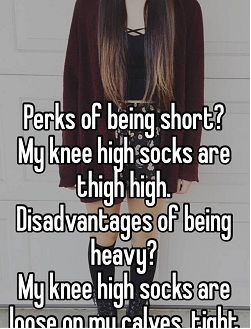
On the other hand, thigh-high socks offer more protection than knee-high socks. If you don’t have any conditions above your knee, you can choose your socks based on personal preference.
It is also important to note that, if you do choose knee-high stockings, you must keep the upper edge of the fabric below the knee cap. Otherwise, the sock band could flip and cut off circulation.
It is also important to note that some people may be irritated by the fabric and bands of compression socks.
Some people even have allergic reactions to the elastic bands that help keep thigh-high socks up. If this is true for you, a shorter sock that is in contact with less skin might be better.
Support thigh-highs go with pants, dresses, skirts, and shorts. Support knee-high socks, on the other hand, can be worn with pants, business casual outfits, and work clothes. Your choice ultimately comes down to personal preference and your fashion sense.
Who Can Wear Support Knee-High Socks?
Compression gear has several applications in both health and sports. Knee-high socks are the preferred choice of athletes, nurses, edema patients, and laborers. They can be used by:
People who Experience Swelling of Feet and Ankles
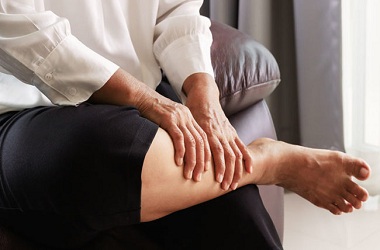
Swollen feet and ankles is common for both men and women.
Edema, pain, and heaviness can be caused by lack of movement or travel.
It can also occur in people who are recovering from surgery or who are pregnant.
Fortunately, compression socks are clinically proven to reduce edema symptoms and get rid of the heaviness that can accompany it.
Patients with Leg and Foot Conditions
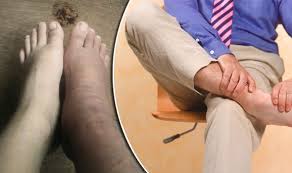
Physicians prescribe compression stockings for leg conditions including chronic venous insufficiency.
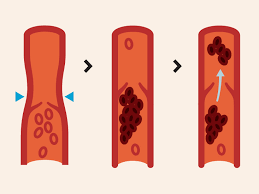
They can help with blood clots, prevent venous ulcers, increase lymphatic drainage, control spider veins or varicose veins, and reduce the risk of Deep Vein thrombosis (DVT).
Compression socks are also a great way to improve blood circulation. This helps to prevent blood from pooling in the feet and reverses the effects of venous hypertension.
Nurses and On-Duty Medical Staff

Many nurses wear support knee-high socks as a part of their uniform because of the physically strenuous and tiresome nature of their work.
Medical staff and healthcare professionals also wear compression socks to prevent edema and swollen feet and ankles. In fact, white-colored compression socks are so ubiquitous that they have become a symbol for medical staff.
Diabetics
Because of the nature of their disease, diabetics need life-long foot care. They are at a high risk for injuries, infections, ulcers, nerve damage, and skin diseases on the feet and ankles.
Many physicians prescribe their diabetic patients compression therapy to combat these issues. In diabetics, small cuts and injuries can lead to ulcers and even result in amputations.
Support knee-high socks can provide adequate protection from minor cuts, wounds, and insect bites while supporting the patient’s legs.
Athletes
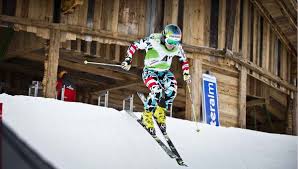
Compression socks have become a regular part of modern workout clothing. They are perfect for both amateur and elite athletes.
Football players, bikers, runners, bodybuilders, baseball players, and hockey players prefer knee-high socks. Acrobats, gymnasts, and professional stage dancers prefer thigh-high and pantyhose style compression gear.
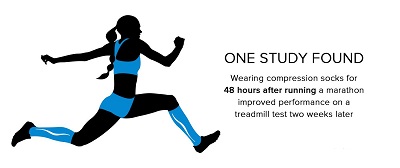
Athletes use compression gear because it can:
-
- Improve Your Performance

While there is not much scientific evidence to suggest that compression socks can improve an athlete’s performance, many athletes swear by their personal experiences in this area.
This is why you often see athletes wearing compression gear at professional events.
-
- Prevent Injury

Knee-high compression socks support the muscles and joints of your limbs and help you maintain balance.
They can also prevent your joints from getting sprained or injured. Athletes also appreciate that compression gear keeps the legs safe from minor cuts.
-
- Avoid Training Fatigue
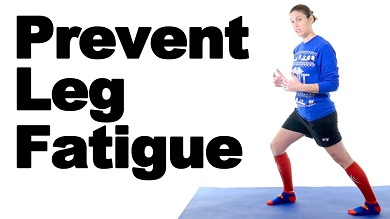
If you are feeling exhausted while trying to keep up with your personal trainer’s hard workout routine or if marathon training is wearing you down, then you are in the middle of training fatigue.
This can be caused by many things, including lack of sleep, poor diet, an uncomfortable environment, or the wrong workout clothes.
Wearing compression socks is one of the easiest ways you can reduce this training fatigue and get back to reaching your goals.
Individuals Who Have a Unique Fashion Sense
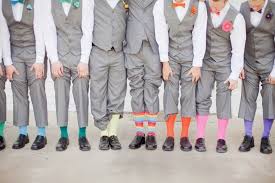
Compression socks have come a long way from the maternity clinics and rehabilitation healthcare centers where they were first used. They have a style of their own now. Compression garments are no longer just plain white grandma socks. The newest designs are incredibly trendy and stylish.
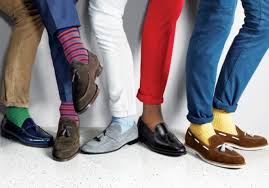
Athletes, bikers, gym-goers, and runners usually match their compression stockings to their outfits so they can boost their performance while looking sharp.
There are even compression socks that go with formal and semi-formal work clothing. Some professionals, including medical technicians, trauma center staff, and nurses, wear socks as a part of their daily uniform.
Best Ways to Shop for Support Knee-High Socks

While compression socks are frequently prescribed by physicians, they are infrequently covered by insurance. Some companies may pay for them if you are recovering from venous ulcers or surgery. Unfortunately, you will have to pay for them yourself most of the time.
Online Shopping vs. In-Store Shopping for Support Knee-High Socks
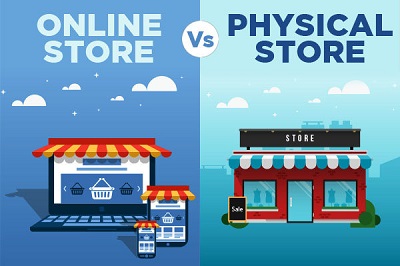
Compression socks are available online and in drug stores. Lower compression levels are available without any medical prescription.
There are advantages to both shopping online and in-store. When you shop in-store, you have the opportunity to try n a sock before you purchase it.
Most outlets also have trained staff that can help you select most suitable stocking for your situation. Unfortunately, however, stores can have a limited range of brands and products.
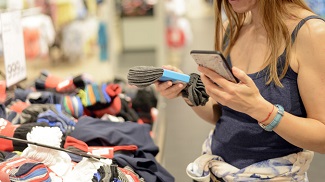
It is also less convenient to take time out of your day to shop around.
Shopping for compression socks online can be much more convenient. You can shop any time you have access to your laptop, tablet, or smartphone. If you known the size and compression level that you want, you can just click ‘add to cart.
Another advantage of virtual shopping is that most online retailers offers discounts, exchanges or returns, free shipping, and deals.
The Takeaway
Knee-high compression socks are a great way to help you stay healthy and fit.
They have many medical benefits and almost no side effects. If you have gotten the okay from your doctor, you can order a pair today and start living with less swelling!
